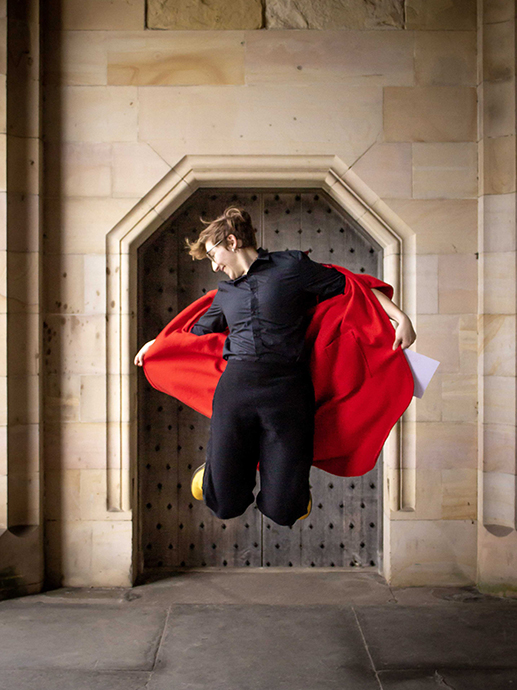- What is your name, your nationality and your educational background?
- I’m George, I’m from the UK and I did my undergraduate and masters at the University of St Andrews, Scotland.
- Where have you studied before and in what field? What are the differences from or similarities to your current project.
- I did an integrated Masters degree in Mathematics, where I specialised in computational methods and geophysics. My primary thesis studied models of plume theory in Volcanic eruption columns. This is quite a different scenario to the sun, but some of the fundamental principles remain the same:
- pressure balance leading to buoyancy (or not) - in this case, physical pressure, but the same applies for solar magnetic pressure.
- thermodynamical systems - vast temperature changes, are valid for both climates; and particle class consideration.
- the idea that particles or elements may act differently in a system depending on their characteristics, and therefore may require distinct but coupled models, is the same in both cases.
I did a secondary research project simulating Magnetic Flux Transport to and on the Photosphere through Fortran & IDL, supervised by Prof. Duncan Mackay. This provided a good basis of understanding for my current project, using the same stagger code logic as Bifrost, and exploring the workings of the innermost layers of the sun’s atmosphere.

- What are you going to study?
- My role at RoCS is attached to the implementation of the new simulation infrastructure DISPATCH. The aim is to more efficiently run models that treat the Sun’s atmosphere as a singular, coupled system. I shall work on the transition of models from Bifrost to DISPATCH, focussing on additional terms to describe the effect of thermal conduction. I shall also tackle the perpetual problems of efficient and realistic boundary conditions for the simulation, which will hopefully result in a full simulation of an evolving solar flare from the upper convection zone to the corona.
- How do you plan to answer to the main question?
- My project is in connection with the CompSci doctoral programme, which develops machine learning and computational techniques for use in interdisciplinary subjects. I’m hoping that my understanding of machine learning will create new opportunities for how we tackle questions such as “how to set up boundary conditions”.

- What brought you to Oslo?
- I seem to be on a Northern trajectory: First from England to Scotland, and now further North to Oslo, and I have aspirations to live even further North at some point in my life! I love the lifestyle out here: everyone is active and happy and there’s more space and time to breathe than the UK. I’m from a small village in England, with one bus every week to the nearest town, no shops and no street lights… so the bustling city life was something I was worried about coping with, and Oslo felt like the perfect transition to city life, as it is not too large and so close to nature and the mountains.
RoCS’s ties to the St Andrews solar group was also a bonus, as I feel I am building off the contacts and knowledge I have already worked to grow.
- How can you describe your experience here at ITA and in Oslo so far?
- I love it! The department has been very welcoming and I’ve enjoyed being a part of an enthusiastic group of people, both in and out of the office. Oslo is beautiful; there is a rich cultural and art community here which has been lovely to explore, and being able to get out into the marka on the weekend and the mornings is the perfect way to reset and relax for the week ahead.

- What do you expect from this experience at RoCS/ITA and Norway?
- I’ve already learnt so much in the first few weeks I’ve been here, about so many different topics (as well as, of course, the sun!) and I’m excited to learn so much more, and to be able to participate in my own talks, and to have my own contributions to all the research I hear about each day. I also can’t wait to explore more of Norway, and learn more about the culture, geography and art of this gorgeous country.
- What do you like to do in your spare time?
- I enjoy exploring the country with my camera: via bike on land (or a good car road trip!), but also via boat on the fjords and lakes. I’m training to compete in long-distance rowing events as a member of Oslo Roklubb, such as Monster the Loch in Scotland (32 kms across the length of Loch Ness), Sulkava row in Finland (58 km, 6-7 hours around an island) and also explore more of the lakes and/or coastlines of Norway.
I also love music and currently play keys (piano) for Romsås Storband. We put on four free/very cheap concerts a year at our home base, Bånkall gård (our Christmas concert is Tuesday 13th December if anyone wants a night out! Short walk from Vestli T-bane, or 380 bus :)
